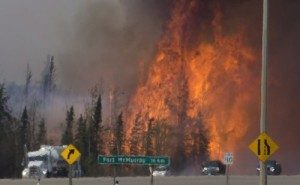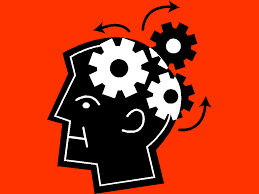Post Traumatic Stress Disorder, PTSD, is a fairly well-known condition in our world, yet some people go through horrific things and don’t develop PTSD. What makes something more likely to be traumatic or give us trauma symptoms? Why can thousands of people go to combat but only a portion of them return with full-blown trauma reactions? The greatest predictor of PTSD occurring as a result of combat is actually based on a history of childhood abuse, that is previous trauma, most likely untreated.
In a recent conference I attended on trauma, we spent some time working through this issue of ‘what makes something traumatic?’ It boils down to a few things —
- Perceived Threat. The event we experience or witness will impact each person in a different way. There is often shock and denial afterward as a person tries to process what has happened to him/herself. If the person
 perceived the event as life-threatening it activates the autonomic nervous system and the brain and body record the incident like a video clip instead of ‘frame by frame’ memory. This is why there is often intrusive memories or flashbacks of the event or nightmares and dreams. The brain is trying to process the memory and figure where to put it, what to do with it. (This is where EMDR, Eye Movement Desensitization and Reprocessing can be an excellent way to treat trauma as it assists the brain in resolving these stuck points).
perceived the event as life-threatening it activates the autonomic nervous system and the brain and body record the incident like a video clip instead of ‘frame by frame’ memory. This is why there is often intrusive memories or flashbacks of the event or nightmares and dreams. The brain is trying to process the memory and figure where to put it, what to do with it. (This is where EMDR, Eye Movement Desensitization and Reprocessing can be an excellent way to treat trauma as it assists the brain in resolving these stuck points). - Old Messages. What you tell yourself about the event is going to impact how it effects you. If you have previous messages or beliefs about yourself or others, this will often run through your mind and filter the ev
 ent. For example, if a person believes that bad things always happen to them or they don’t deserve good things, they will perceive this upsetting event as more proof/evidence that supports that negative belief. If a person experienced abuse from an intimate partner who told them they were worthless and constantly blamed them for ‘causing the abuse’ they might interpret a new assault from a stranger as something that they caused. If those negative cognitions are not there, a person is more likely to process the event as a ‘one of’ and healing comes more quickly.
ent. For example, if a person believes that bad things always happen to them or they don’t deserve good things, they will perceive this upsetting event as more proof/evidence that supports that negative belief. If a person experienced abuse from an intimate partner who told them they were worthless and constantly blamed them for ‘causing the abuse’ they might interpret a new assault from a stranger as something that they caused. If those negative cognitions are not there, a person is more likely to process the event as a ‘one of’ and healing comes more quickly. - Activated Autonomic Nervous System — Fight or Flight. Once the mind and body perceive a threat to safety, the sympathetic nervous system activates and the ‘fight or flight
 ‘ response kicks in. A person will often start to sweat, their hands might shake, their feet and hands might become cold, the body dumps additional digestive acid into the stomach, the heart might beat faster and breathing becomes more shallow and rapid. This puts us into a state of hyper vigilance. This fight or flight response can save our life in a dangerous moment — these are the times when women lift cars off their babies and people do insane acts of strength or courage. However, if the autonomic nervous system continues to activate and keep you in a state of fight or flight when there is no real danger, you might become jumpy, reactionary and the trauma symptoms can become prolific.
‘ response kicks in. A person will often start to sweat, their hands might shake, their feet and hands might become cold, the body dumps additional digestive acid into the stomach, the heart might beat faster and breathing becomes more shallow and rapid. This puts us into a state of hyper vigilance. This fight or flight response can save our life in a dangerous moment — these are the times when women lift cars off their babies and people do insane acts of strength or courage. However, if the autonomic nervous system continues to activate and keep you in a state of fight or flight when there is no real danger, you might become jumpy, reactionary and the trauma symptoms can become prolific.
If you have developed trauma symptoms, most likely evidenced by flashbacks/intrusive memories and nightmares, then you will greatly benefit from professional help. In fact, these symptoms are evidence that your mind and body are ready, and wanting, to resolve the trauma and heal. A trained trauma therapist can teach you how to de-activate the autonomic nervous system along with several other coping skills. It’s bad enough that you’ve experienced the horrific event, don’t let it continue to disrupt your life and take away your quality of life! Help and healing is available. Contact us at Fresh Hope Counselling. We’d be honoured to help you recover from any of life’s hurts, disasters and sorrows. You have already survived — that is proof of your resilience.




